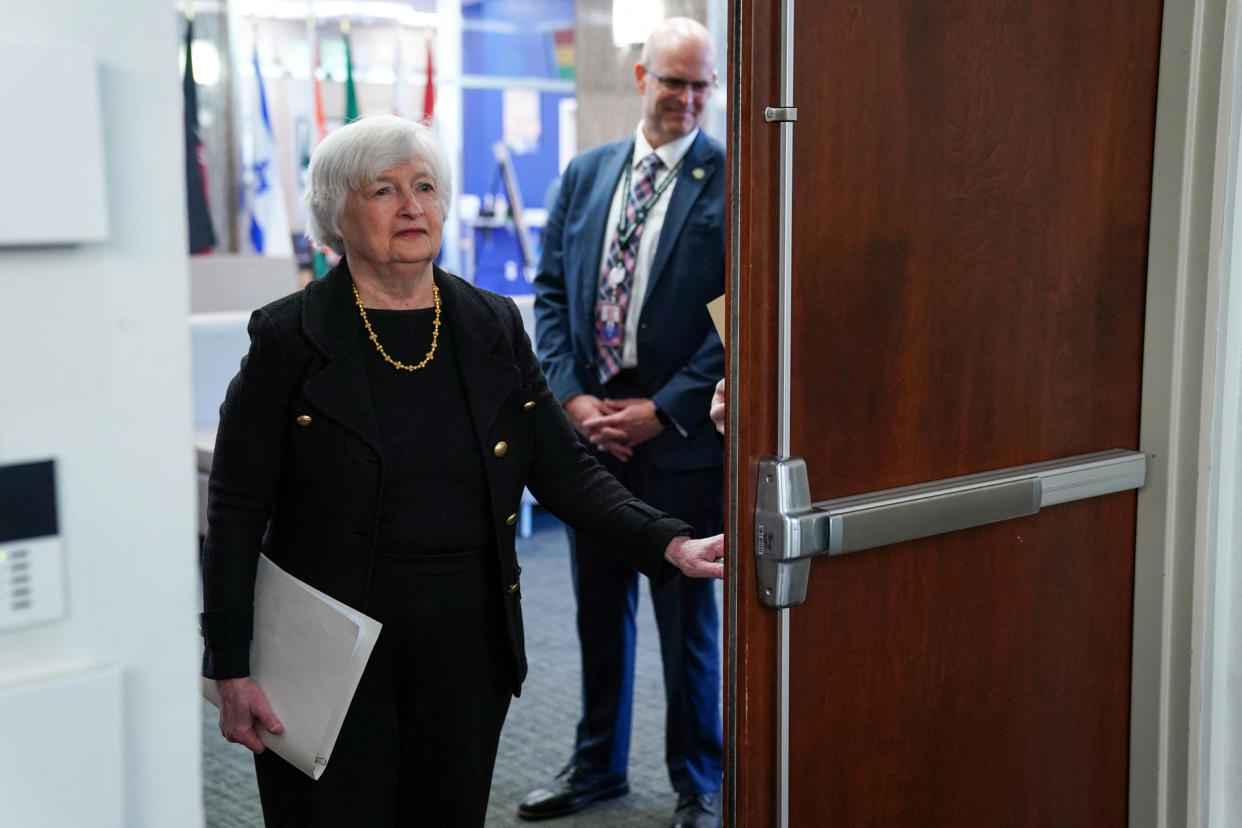Yellen: US could default on debt as soon as June 1
Debt ceiling watchers have had June 15 circled on their calendars for weeks now as an important date. The crucial question: Will the government have enough in the bank to stay afloat until then?
A new letter from Treasury Secretary Janet Yellen says that her guess is that the answer is no.
"Our best estimate," she said in the letter, "is that we will be unable to continue to satisfy all of the government’s obligations by early June, and potentially as early as June 1, if Congress does not raise or suspend the debt limit before that time."
The letter, released on Monday afternoon and addressed to House Speaker Kevin McCarthy, is likely to reignite fears in the financial world that an immediate default - and the economic turmoil that it likely to follow - could be just weeks away.
This was Yellen's first update on the closely-watched question since January when she projected the X-date could be exhausted by early June.
Mid-June is an important period for the debt ceiling talks because it's the next time Treasury's coffers will see a sizable influx of money. Taxpayers will be providing the second installment of their estimated taxes for 2023 around that time.
In her letter, Yellen acknowledged that government could still reach that June 15 date, adding that it is possible "the actual date that Treasury exhausts extraordinary measures could be a number of weeks later than these estimates."
As of April 27, the Treasury Department’s general account had a closing balance of about $296.2 billion. The balance sheet may improve for a few more days as final April tax returns are processed before beginning a gradual decline.
Experts fear that the balance reaching zero - and the default that would follow - could set off steep declines in markets and likely cause an immediate recession with further economic repercussions being felt around the world.
Other experts see a 'peak danger zone' in July
Monday's letter from Yellen offers a more aggressive estimate than those recently produced by a series of outside analysts who downplay the chances of a June default.
One of those updated projections came from Wrightson ICAP, a close observer of the billions that flow in and out of the Treasury department every day. The research group is now most focused at this point on late July as the "peak danger zone" for default, according to a new outlook released Monday. Wrightson ICAP still projects a 10-20% chance of default ahead of that June 15 date.
Wrightson ICAP's “confidence interval around our June forecasts tightens a little with each passing day, as the scope for surprises narrow,” chief economist Lou Crandall tells Yahoo Finance.

Michael Pugliese, a director and senior economist at Wells Fargo's corporate and investment bank, was also quick to underline that the billions that Treasury balances are exceedingly hard to project with certainty.
“They'll probably make it to the end of July but probably is a much different word when we're talking about an accidental default,” he noted in an interview, discussing the consequences that could be in store if projections are off.
Experts are also quick to note that even if the government is able to make it past June 15, the government has little to no chance of staying afloat until the end of summer without a deal.
Other closely watched analyses are expected soon from the Congressional Budget Office (CBO) and from the Bipartisan Policy Center, both of whom are set to release their own estimates in the coming weeks as they take into account a full picture from the recent tax season.
In a statement, Shai Akabas of the Bipartisan Policy Center said the U.S. getting this close to default is "not a position befitting of a country considered the bedrock of the financial system, and only adds uncertainty to an already shaky economy."
The CBO has announced it will weigh in with its updated report on May 12.
Serious harm
In her note, Yellen concluded with a promise to update Congress in the coming weeks and repeated her calls for Congress as soon as possible to increase or suspend the debt limit.
She notes that 2011's debt ceiling standoff led the credit rating agency Standard & Poor's to downgrade the US credit rating for the first time in history even though policymakers averted a default at the last minute.
"Waiting until the last minute to suspend or increase the debt limit can cause serious harm to business and consumer confidence, raise short-term borrowing costs for taxpayers, and negatively impact the credit rating of the United States," she wrote.
Yellen also outlined a new "extraordinary measure" - the accounting maneuvers her department can employ to allow the government to stave off a default for only a limited time - in Monday's letter. She announced that Treasury would temporarily suspend the issuance of State and Local Government Series (SLGS) Treasury securities, noting that such a move will "deprive state and local governments of an important tool to manage their finances."
At the moment, lawmakers and the White House remain in a standoff over the issue with House Republicans who passed a bill last week that includes a debt ceiling increase alongside a host of provisions anathema to Democrats. Meanwhile, President Biden demands that lawmakers simply pass a clean increase and negotiate later on other provisions.
Negotiations are expected to resume next week with the White House announcing Monday evening that President Biden had invited Speaker McCarthy to the White House on May 9 for a meeting alongside other Congressional leaders.
This post has been updated.
Ben Werschkul is Washington correspondent for Yahoo Finance.
Click here for politics news related to business and money
Read the latest financial and business news from Yahoo Finance
Download the Yahoo Finance app for Apple or Android
Follow Yahoo Finance on Twitter, Facebook, Instagram, Flipboard, LinkedIn, and YouTube
